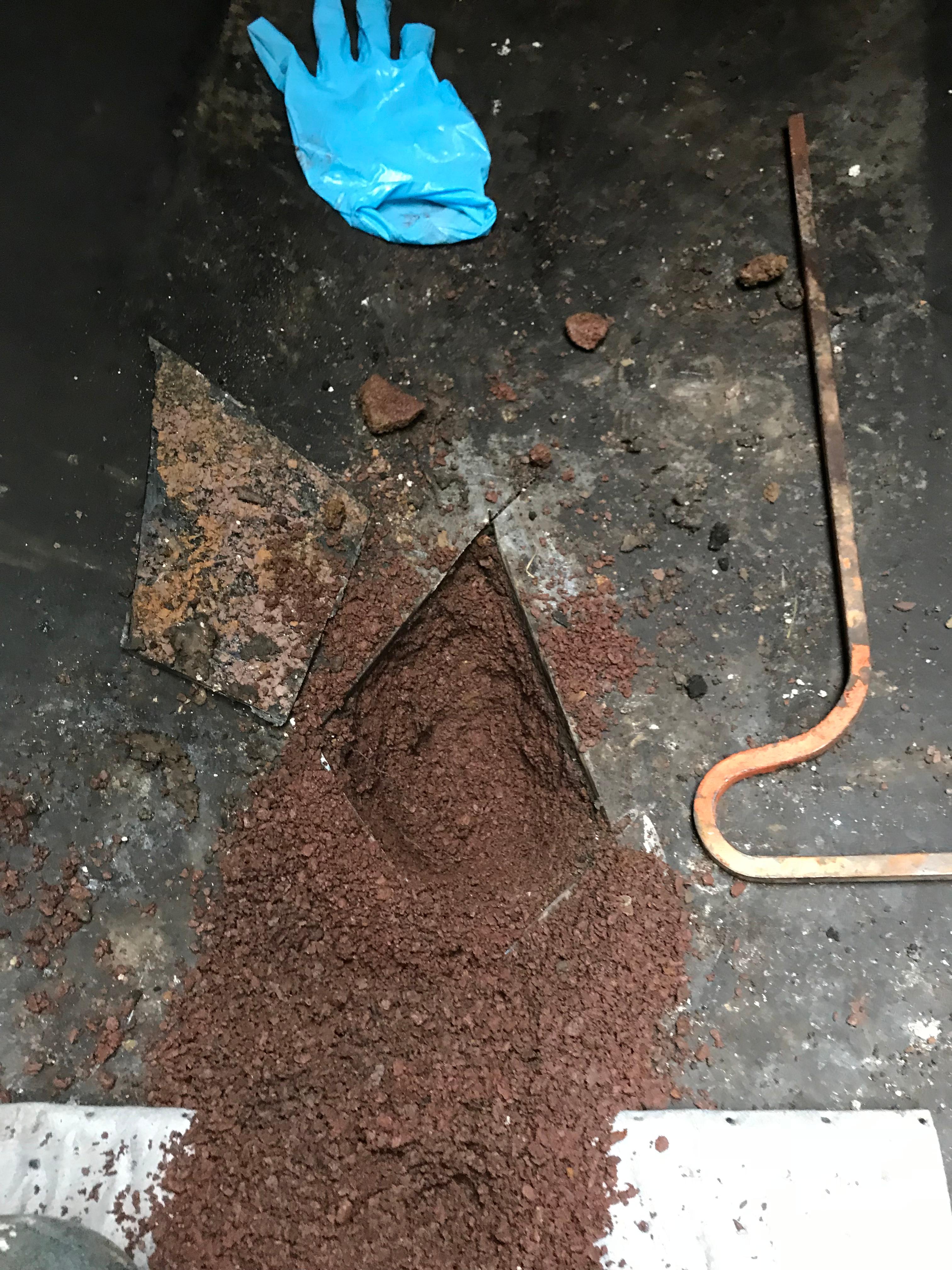Oil Tank Closure in Place
When oil tanks were buried, little to no thought was given to the eventual removal of the oil tank. Out of site out of mind fits very well regarding a buried oil tank. Most oil tanks can be removed and tank removal or tank closure in place are pretty much the same price. Some tanks cannot be removed due to their location to a surface obstruction. Decks, sheds, retaining walls and foundations all create encumbrances to an oil tank being removed. While perhaps the tank could be removed, the engineering and work necessary would make it financially prohibitive. It is these cases where it is not financially practical to remove an oil tank that you can close the tank in place. The steps for tank closure in place are similar to removal. The photos below show an approximate 11' long tank that runs parallel to the foundation of the dwelling. Removing the tank would disturb over 14' of paving stones, as well advance an excavation to 6' deep, which is deeper than than the foundation of the dwelling in this area. So for safety and economic concerns this tank was filled in place.

Both tank removal and tank closure in place entail excavating an area so the tank can be accessed.

This has to be completed because an oil tank is never 100% empty, like a tube of toothpaste, a shampoo bottle or a quart of oil, there is always some residual liquid. Removal and closure in place require that you enter and clean the tank of all liquid. This entails cutting the tank open, and physically cleaning the tank.

So the oil gets removed and tank gets wiped dry.

Now you have a metal shell. So how do you know if the tank leaked? You have to take soil samples, but how do you sample under an oil tank? Simple, you cut small section out of the tank so you can access the soils below the tank, these openings are called "tank coupons".

The photo shows a coupon cut from the tank and the soils below the tank are clearly visible.

After soil sampling the tank voids gets backfilled with clean fill in a volume equal to the tank void.

The area of excavation gets backfilled with the original excavated soils so the area is ready for restoration. In this photo since a sidewalk was removed, the excavation is backfilled shy of space needed to replace the walkway.

Oil tank closure in place or removal and testing Arcola, Ardmore, Aston, Audubon,Berwyn, Bensalem, Birchrunville, Bridgeport, Bristol, Brookhaven, Broomall, Bryn Mawr, Buckingham Chadds Ford, Chalfont, Chester, Chester Heights, Chester Springs, Cheyney, Clifton Heights, Collegeville, Concordville, Conshohocken Crum Lynne, Darby, Devault, Devon, Downingtown, Doylestown, Drexel Hill, Eagleville, Edgemont, Essington, Exton, Fairless Hills, Fairview Village, Feasterville, Folcroft, Folsom, Gladwyne, Glen Mills, Glen Riddle Lima, Glenolden, Gradyville, Haverford, Havertown, Holmes, Immaculata, Kennett Square, Kimberton, King of Prussia, Lahaska, Lansdowne, Lenni, Lionvill, Lyndell, Malvern, Marcus Hook, Media, Mendenhall, Merion Station, Mont Clare, Morton, Narberth, Newtown Square, New Hope, Norristown, Norwood, Oaks, Paoli, Phoenixville, Philadelphia, Pocopson, Prospect Park, Quakertown, Ridley Park, Royersford, Sharon Hill, Spring City, Springfield, Swarthmore, Trevose, Thorndale, Thornton, Unionville, Upper Darby, Uwchland, Valley Forge, Villanova, Wallingford, Wayne, Warrington, Washington Crossing, West Chester, Westtown, Woodlyn, Wynnewood and Yardley

